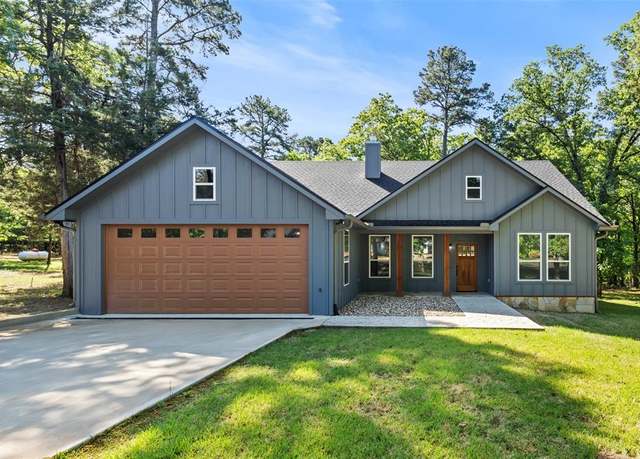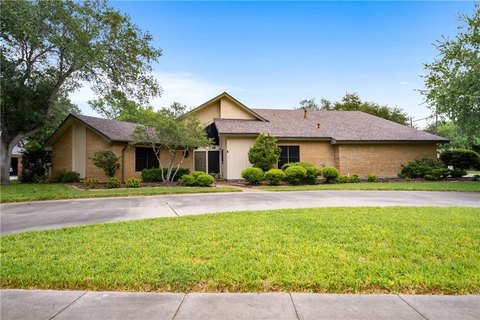Imagine walking up to the grand entrance of a home that feels more like a private sanctuary than a mere residence. The sprawling grounds are landscaped to perfection, with a meticulously designed garden that looks like something out of a fairytale. As you step inside, you’re greeted by towering ceilings and walls adorned with fine art. Everything, from the rare wood flooring to the artisanal fixtures, speaks of exclusivity and elegance. This is no ordinary home—it’s a luxury property, where every square inch has been crafted to perfection and every corner tells a story of refinement. But beyond this dream-like image, what truly defines a luxury home? And why is the demand for these extraordinary properties soaring? In this article, we’ll explore the world of luxury homes, diving into current trends, key features, and the statistics that paint a picture of the high-end real estate market today.
The Core Characteristics of a Luxury Home
Defining a luxury home isn’t as simple as putting a price tag on it. Luxury real estate represents the highest standards of comfort, design, and exclusivity, but it goes much deeper than that. Here are some key characteristics that set luxury homes apart:
- Location, Location, Location: In real estate, location has always been king, but this is especially true for luxury homes. High-end properties are usually found in desirable areas, whether it’s a beachfront in Malibu, a mountainside in Aspen, or a historic neighborhood in Paris. According to a report from Knight Frank, location is a primary driver of value, often accounting for 40% or more of a luxury home’s worth.
- Architectural Distinction and Custom Design: Luxury homes are often designed by renowned architects and feature custom-built elements tailored to the owner’s preferences. These aren’t cookie-cutter houses; every detail, from the layout to the finishes, is curated to offer a unique living experience. A survey by Wealth-X found that 70% of ultra-high-net-worth individuals (UHNWIs) prefer unique, customized homes over pre-designed luxury models.
- Expansive Space and Privacy: Space is a luxury in itself. High-end properties usually boast large square footage, high ceilings, and sprawling grounds, offering an atmosphere of openness and privacy that you simply can’t find in standard real estate. According to Coldwell Banker’s Luxury Real Estate Report, most luxury homes in the U.S. exceed 5,000 square feet, with some estates reaching 20,000 square feet or more.
- Cutting-Edge Technology and Smart Home Features: Luxury homeowners are increasingly embracing smart home technology to enhance convenience, security, and energy efficiency. From voice-controlled lighting to automated security systems, these homes are designed to be controlled at the touch of a button. In fact, a survey by Luxury Portfolio International found that 76% of high-end buyers consider smart home technology a critical feature.
- High-End Amenities for Ultimate Comfort: One of the hallmarks of a luxury home is the range of exclusive amenities designed to elevate daily life. Private pools, wine cellars, indoor theaters, spa facilities, and home gyms are just the beginning. In high-demand markets, properties even feature personal helipads, infinity pools, and car elevators.
The Growing Market for Luxury Homes: Statistics and Trends
Luxury real estate has been experiencing remarkable growth over the past few years. Let’s take a closer look at some key statistics and trends shaping the market today.
- Increasing Demand and Price Growth: Demand for luxury properties has skyrocketed since the pandemic, with more people seeking spacious, comfortable homes that offer a true escape. According to a report by Redfin, the price of luxury homes in the U.S. increased by an average of 25% from 2020 to 2022. In cities like Miami and San Francisco, price growth has been even more dramatic, with annual increases of over 30%.
- The Rise of Second Homes: Many affluent individuals are now purchasing secondary properties in desirable locations, whether as vacation homes or investment properties. A study by Savills showed that 39% of wealthy buyers acquired a second home in 2022, with destinations like Aspen, Hawaii, and Tuscany among the most popular choices.
- Remote Work and Lifestyle Changes: The shift to remote work has also influenced the luxury market, as buyers seek properties that offer a combination of comfort and functionality. In a survey by Zillow, 80% of luxury buyers stated that a dedicated home office is now a priority, reflecting a desire to create work-friendly environments within these lavish spaces.
- Sustainable Luxury is on the Rise: Today’s luxury buyers are increasingly eco-conscious, and sustainable features are now a major selling point. In a 2023 survey by the National Association of Realtors, 67% of high-end buyers said they prefer properties with eco-friendly features, such as solar panels, green roofs, and energy-efficient systems.
Exploring the Financial Appeal of Luxury Homes
Luxury homes aren’t just status symbols; they’re also considered smart investments. High-end real estate has historically been less susceptible to economic downturns, providing a level of financial stability for investors. Here are a few reasons why luxury homes make attractive investments:
- Appreciation Potential in Key Markets: Properties in prime locations, such as New York City, London, and Hong Kong, tend to appreciate faster than average. According to Knight Frank’s Prime Global Cities Index, luxury home values in top-tier cities grew by 8.2% in 2022, with Miami, Dubai, and Los Angeles leading the way.
- Limited Supply and High Demand: Many luxury homes are unique, architecturally significant, or located in areas where new construction is highly regulated or limited. This scarcity creates a stable demand and ensures that prices remain high, even during market downturns.
- High-End Rental Opportunities: Luxury homes in sought-after destinations often generate substantial income as vacation rentals or short-term rentals. Platforms like Airbnb Luxe and Vrbo are popular for renting out properties in exclusive areas. According to AirDNA, high-end short-term rentals in cities like Aspen and Maui have seen a 60% increase in revenue since 2021, as travelers seek private and exclusive accommodations.
Top Trends in Luxury Home Features for 2024
Luxury homes are constantly evolving to meet the demands of affluent buyers. Here are some of the most popular features shaping the luxury real estate market in 2024:
- Wellness-Focused Amenities: As health and wellness become a top priority for buyers, more luxury homes are incorporating wellness-focused features. This includes in-home saunas, meditation rooms, and fitness facilities. According to a report by Christie’s International Real Estate, 82% of luxury buyers now consider wellness amenities essential.
- Outdoor Living Spaces: Expansive outdoor spaces with luxury features, such as fire pits, infinity pools, and alfresco kitchens, have become a must-have for luxury homes. Many buyers want their outdoor spaces to feel like an extension of their indoor living areas, designed for both relaxation and entertaining.
- Private Art Collections and Galleries: Art collection spaces are also in demand. Wealthy homeowners want to display their collections in climate-controlled, well-lit spaces that resemble museum galleries. Luxury Portfolio International found that 45% of buyers are interested in homes with designated art storage or display areas.
- Home Automation and Security Systems: High-end buyers are increasingly investing in advanced home automation and security technology, including facial recognition entry, AI-driven security cameras, and biometric access. These systems are designed to provide the highest level of convenience and peace of mind.
- Eco-Friendly and Energy-Efficient Designs: The move toward sustainability in luxury homes isn’t slowing down. Solar panels, energy-efficient windows, rainwater harvesting systems, and sustainable building materials are now common in new luxury builds.
Why Luxury Homes Will Always Hold Their Appeal
Luxury homes offer a unique blend of comfort, status, and investment potential, making them a compelling choice for affluent buyers around the world. But beyond the financial and material benefits, luxury properties fulfill a deeper desire for beauty, privacy, and a personalized environment that resonates with the owner’s lifestyle. Whether it’s a modern penthouse in a bustling city or a secluded estate in the countryside, these properties embody the ultimate in exclusivity and opulence.
As we move further into 2024, the luxury home market shows no signs of slowing down. With evolving trends, an expanding base of ultra-wealthy buyers, and a focus on sustainability and wellness, luxury real estate continues to set new standards in how we think about living spaces. For those who can afford it, a luxury home isn’t just a place to live—it’s a statement of personal style, a testament to success, and a sanctuary designed to enhance every aspect of life.












 Afrikaans
Afrikaans Shqip
Shqip አማርኛ
አማርኛ العربية
العربية Հայերեն
Հայերեն Azərbaycan dili
Azərbaycan dili Euskara
Euskara Беларуская мова
Беларуская мова বাংলা
বাংলা Bosanski
Bosanski Български
Български Català
Català Cebuano
Cebuano Chichewa
Chichewa 简体中文
简体中文 繁體中文
繁體中文 Corsu
Corsu Hrvatski
Hrvatski Čeština
Čeština Dansk
Dansk Nederlands
Nederlands English
English Esperanto
Esperanto Eesti
Eesti Filipino
Filipino Suomi
Suomi Français
Français Frysk
Frysk Galego
Galego ქართული
ქართული Deutsch
Deutsch Ελληνικά
Ελληνικά ગુજરાતી
ગુજરાતી Kreyol ayisyen
Kreyol ayisyen Harshen Hausa
Harshen Hausa Ōlelo Hawaiʻi
Ōlelo Hawaiʻi עִבְרִית
עִבְרִית हिन्दी
हिन्दी Hmong
Hmong Magyar
Magyar Íslenska
Íslenska Igbo
Igbo Bahasa Indonesia
Bahasa Indonesia Gaeilge
Gaeilge Italiano
Italiano 日本語
日本語 Basa Jawa
Basa Jawa ಕನ್ನಡ
ಕನ್ನಡ Қазақ тілі
Қазақ тілі ភាសាខ្មែរ
ភាសាខ្មែរ 한국어
한국어 كوردی
كوردی Кыргызча
Кыргызча ພາສາລາວ
ພາສາລາວ Latin
Latin Latviešu valoda
Latviešu valoda Lietuvių kalba
Lietuvių kalba Lëtzebuergesch
Lëtzebuergesch Македонски јазик
Македонски јазик Malagasy
Malagasy Bahasa Melayu
Bahasa Melayu മലയാളം
മലയാളം Maltese
Maltese Te Reo Māori
Te Reo Māori मराठी
मराठी Монгол
Монгол ဗမာစာ
ဗမာစာ नेपाली
नेपाली Norsk bokmål
Norsk bokmål پښتو
پښتو فارسی
فارسی Polski
Polski Português
Português ਪੰਜਾਬੀ
ਪੰਜਾਬੀ Română
Română Русский
Русский Samoan
Samoan Gàidhlig
Gàidhlig Српски језик
Српски језик Sesotho
Sesotho Shona
Shona سنڌي
سنڌي සිංහල
සිංහල Slovenčina
Slovenčina Slovenščina
Slovenščina Afsoomaali
Afsoomaali Español
Español Basa Sunda
Basa Sunda Kiswahili
Kiswahili Svenska
Svenska Тоҷикӣ
Тоҷикӣ தமிழ்
தமிழ் తెలుగు
తెలుగు ไทย
ไทย Türkçe
Türkçe Українська
Українська اردو
اردو O‘zbekcha
O‘zbekcha Tiếng Việt
Tiếng Việt Cymraeg
Cymraeg isiXhosa
isiXhosa יידיש
יידיש Yorùbá
Yorùbá Zulu
Zulu